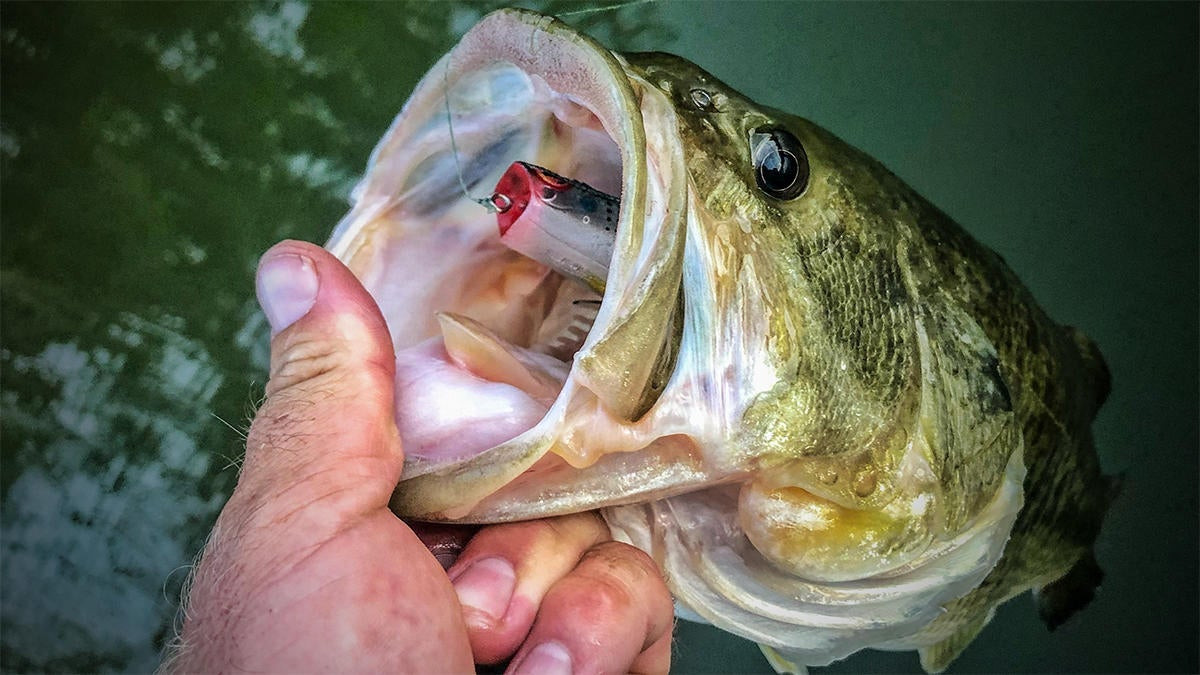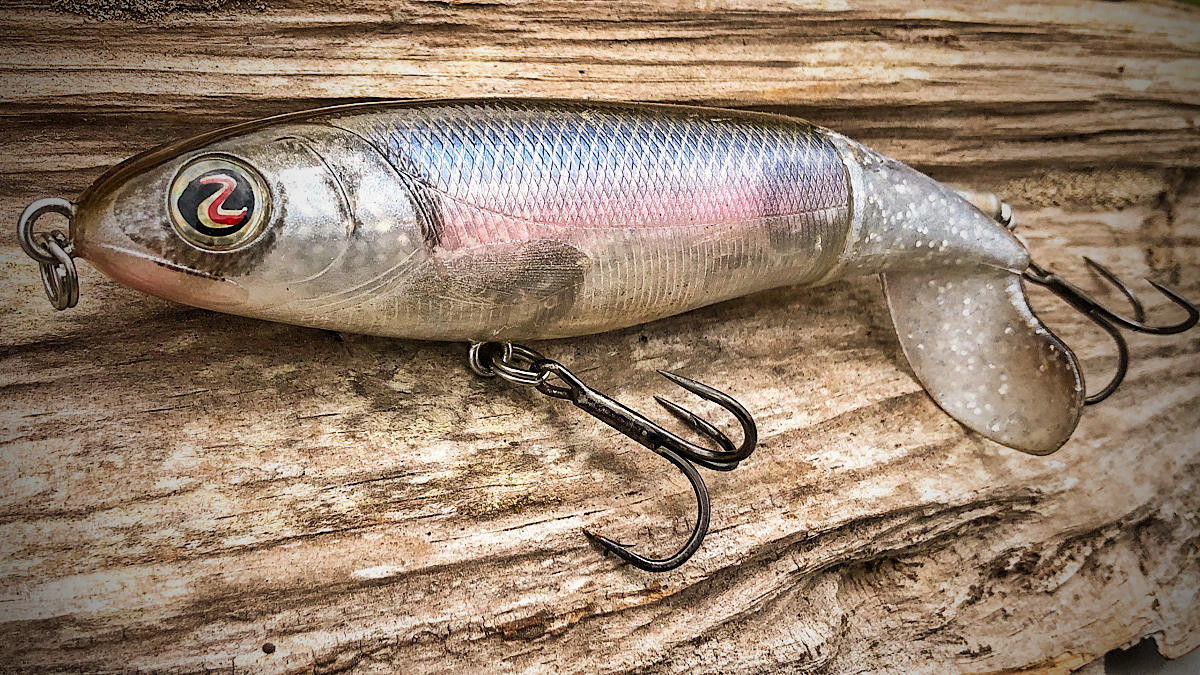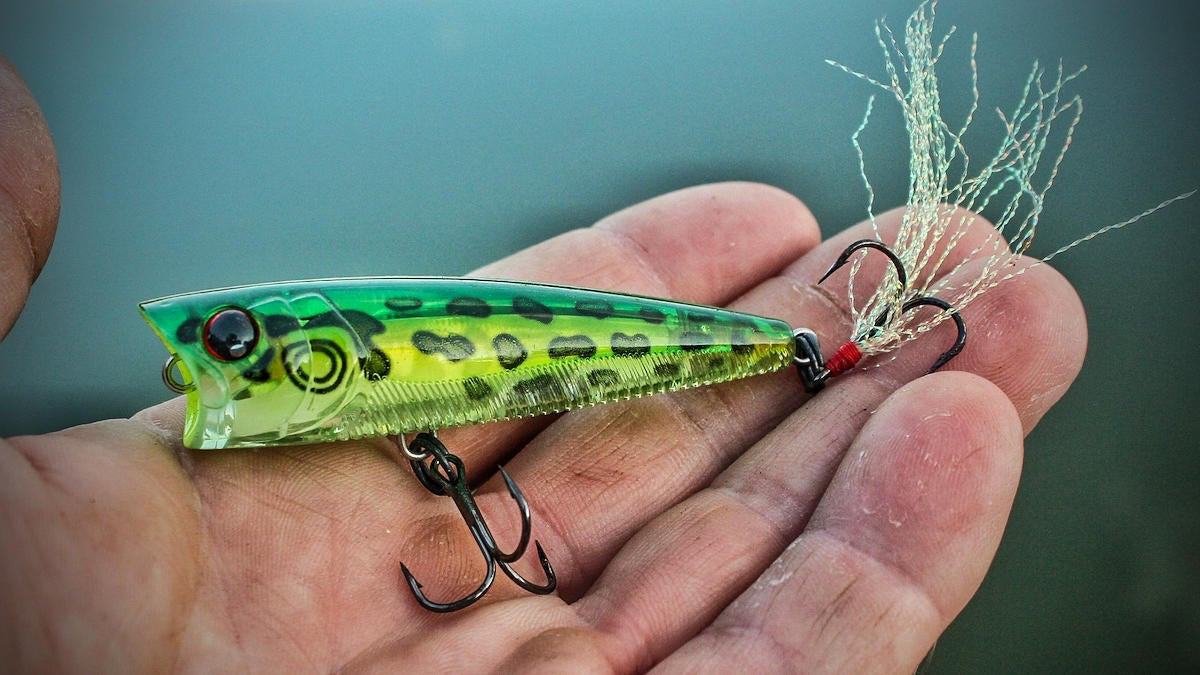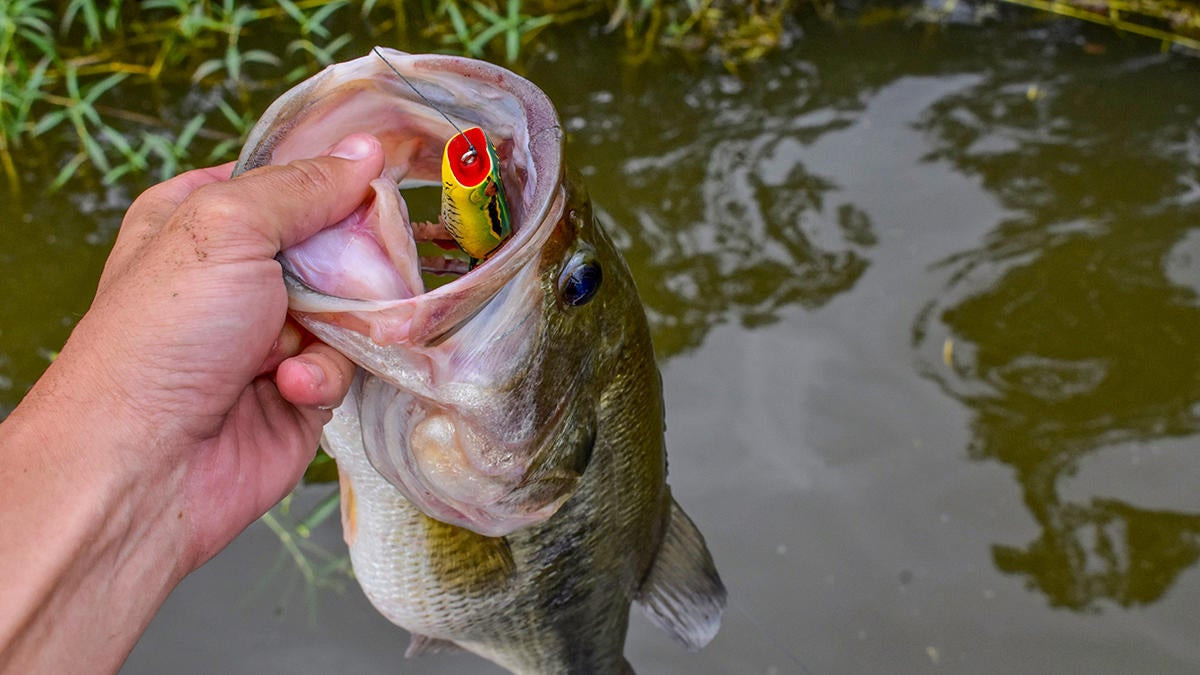Each and every summer, lots of bass head offshore towards deeper water. Several of the bigger, more experienced ones, however, tend to group up in wolf packs and stay shallow. In these largely overlooked shallow waters they’re able to find abundant food in several different forms. From mayflies and other insect hatches to spawning sunfish, there’s a bounty of prey to be had for the bass that look shallow.
Perhaps the most beautiful part is that these food sources and their proximity to shallow water make the bass very susceptible to topwater lures. Not only are the fish big and often unpressured but they’re also amped up by their competition and eager to explode on a topwater bait.
I’d say that’s a win, win, win… win situation.
Today, we’ll talk about the three must-have topwaters for this type of fishing and how each can be used to target these shallow bass a little differently.
Plopper-style topwater
As far as I know, River2Sea was first on the scene with this type of large prop tail bait so I pay homage to them here by referencing the River2Sea Whopper Plopper. But there are a few other baits like this out there now too like the Berkley Choppo that all have a little different sound to them. Whichever you prefer, this style bait is extremely effective for pursuing shallow summer bass and there are two major reasons for that.
It can be cast long distances and has an aggressive sound.
Having a bait with which you can cover a lot of water when fishing shallow in the summer is a must. Though the fish are often big, they are also often few and far between. So you need a bait at times you can cast a long way and parallel the shore with. The constant and loud sound of this type bait also helps fish hear it from afar and track it down. So you’re able to again cover lots of water not only by casting a long ways but also by calling a fish in from a larger area with each cast.
I use a fairly large rod with a Whopper Plopper paired with 40-pound test Sufix 832 Braid and a Lew’s Super Duty Speed Spool LFS Casting Reel in 7.5:1 gear ratio. It’s not a bad idea to go with the even faster 8.3:1 reel so that you can burn the bait back at the end of a cast and fire out again; you just have to be careful not to reel the bait too quickly on the retrieve, though. As for the rod, a 7-foot, 8-inch medium-heavy Fitzgerald Vursa Series Casting Rod will launch a Whopper Plopper and horse big ones to the boat really well.
Finesse popper
This is one I’ll concede to you if you’re a particularly big fan of a small prop bait like the Brian’s Prop Bee. I use a finesse popper the same way a lot of anglers use the smaller prop baits to target shallow summer bass in close quarters situations. For instance, I’ll often move from a Plopper-style bait to a popper when I’m fishing a dock, laydown or if I happen to know exactly where a bluegill bed is for instance.
So the Plopper is more of a search bait a lot of times where a popper is more target oriented. Picking the right rod is crucial for the popper (or small prop bait) because you’re going to need to make very accurate casts around tight cover. You don’t want too stiff of a setup because of the small treble hooks, while at the same time ensuring your rod is strong enough to pull big ones away from cover.
A 7-foot medium-heavy casting rod does well for me here, as I’m 5 feet, 11 inches tall; if you’re a little shorter, you might want to back off to around a 6-foot, 8-inch rod so you can make roll casts without hitting the water’s surface.
I typically like to go with 30-pound test Sufix 832 braid, at times backing off to 20-pound monofilament. The braid does better when you know you’re going to periodically cast a fairly long ways and around some pretty rough cover here and there. But there have been times when I was fishing around mayfly hatches in open water for instance where I really preferred the mono. The stretch of the monofilament helped prevent bending out the small treble hooks on my popper when a big bass hit close to the boat and made its initial run. If you are using braid in a situation like that you just have to remember to back off on your drag a little on a short strike or you’ll bend your hooks out and be sorely disappointed.
Popping frog
Last but certainly not least, the popping frog is the best topwater bait for targeting shallow summer largemouth, in particular around and under dense cover. Whether fishing through thick water willow grass or skipping under trees, docks and bushes, there isn’t a better bait made in my opinion than a popping frog. My particular favorite is the the SPRO Bronzeye Poppin’ Frog 60.
A popping frog has two big, bold hooks that allow for the use of heavy braided line and beefy gear. So you have all you need to pull fish out of the thickest cover imaginable and the recessed hooks also prevent the accidental snagging of cover, at least most of the time. So if I’m fishing down the edge of water willow line for example, I’m going to go with the popping frog over the popper. There’s often an equally good chance of the fish hitting both but there’s a better chance of a fish biting the popper and then hanging one of the exposed trebles on cover. With a frog, both hooks are usually buried in the fish and there’s far less of a chance of the fish hanging a hook in the cover and pulling free.
For the frog, I really like a 7-foot, 3-inch heavy-action casting rod with 40-pound Sufix 832 Braid and the same Lew’s Super Duty Speed Spool LFS in 7.5:1 that I use with the Whopper Plopper. The 7-foot, 3-inch heavy is a little more rod than some folks recommend for a frog but there’s no doubt that it’s put some fish in the boat I would have otherwise lost on lesser rods.
To sum it up, there are big ones shallow in the summer. They eat topwaters, so that’s where you’ll find me most of the time. A Plopper-style bait, finesse popper and popping frog give me three versatile topwater tools to apply to the shallows and effectively go from search mode to picking apart any type of shallow cover I might find.
Be sure to pick the right rod, reel and line setup for each approach and then really pay attention to which of the three of these offerings are best suited for the particular situation you’re in and you’ll be ready to put big ones in the boat this summer.















